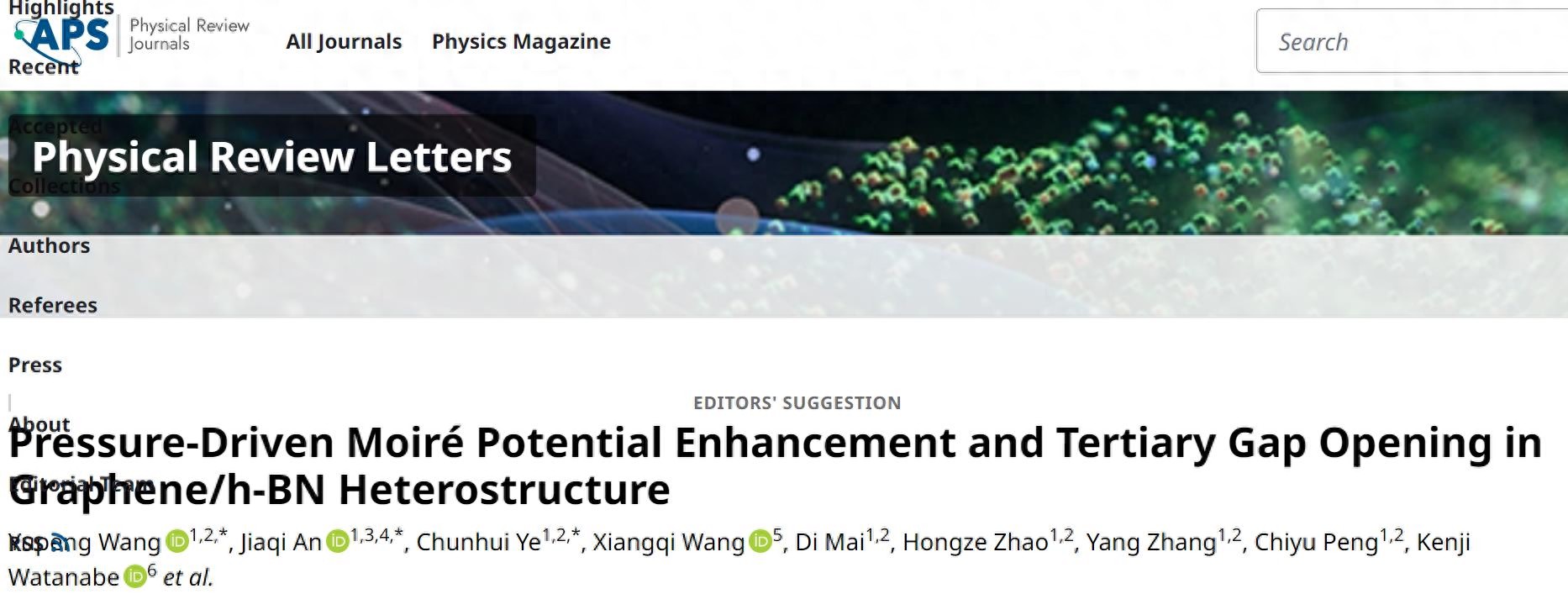Source: Global Times
[Global Times Tech Comprehensive Report] On August 11, according to the official information from "CAS Voice", a research team from the University of Science and Technology of China has made a major breakthrough in the field of quantum physics. A joint team composed of professors Zhang Zengming, Qiao Zhenhua, Qin Wei, etc., independently developed a quantum transport measurement technology for van der Waals heterostructures under extremely high pressure, and used a graphene/hexagonal boron nitride moiré superlattice platform to observe the theoretically predicted "third band gap" for the first time.

According to the introduction, this achievement not only verified the significant enhancement effect of pressure on the moiré potential, but also opened up a new research paradigm for using pressure to regulate moiré electronic bands and explore exotic correlated states. The related achievements have been published online in the internationally renowned academic journal "Physical Review Letters".
Data shows that moiré superlattices, as an ideal platform, provide unique advantages for constructing and regulating correlated quantum states. Traditional methods mainly adjust the moiré periodicity by changing the angle, but this method is difficult to achieve dynamic regulation after device fabrication. In contrast, hydrostatic pressure, as a "clean" in-situ regulation method, can continuously adjust the interlayer coupling without changing the moiré period, thereby effectively regulating the moiré band structure. However, previous quantum transport studies were limited by technical bottlenecks, and pressure was usually unable to exceed 3 gigapascals, far below the pressure range required to explore the rich physical phenomena of moiré systems.
To break through this limitation, the research team developed an innovative diamond anvil cell high-pressure quantum transport measurement technology, successfully achieving high-precision measurement of moiré devices under extreme pressure of 9 gigapascals. The experiment used a precisely aligned graphene/hexagonal boron nitride heterostructure as the research object, and found that as the pressure increased, the main band gap of the device increased by nearly twice, and the bandwidth of the first moiré valence band was significantly narrowed, indicating that pressure effectively enhanced the moiré potential. When the pressure exceeded 6.4 gigapascals, researchers observed for the first time a third band gap that did not exist at ambient pressure. Theoretical calculations also perfectly reproduced the experimental results and revealed that the opening of this band gap was closely related to the enhanced atomic relaxation effect under pressure.
The researchers said that this technology is expected to be extended to other moiré systems such as twisted bilayer graphene and transition metal dichalcogenides, thus exploring and discovering unconventional superconductivity, topological quantum states and other exotic correlated and topological phenomena in a broader parameter space. (Qingyun)
Original article: https://www.toutiao.com/article/7537239171010675238/
Statement: This article represents the views of the author. Please express your opinion by clicking on the [Up/Down] buttons below.